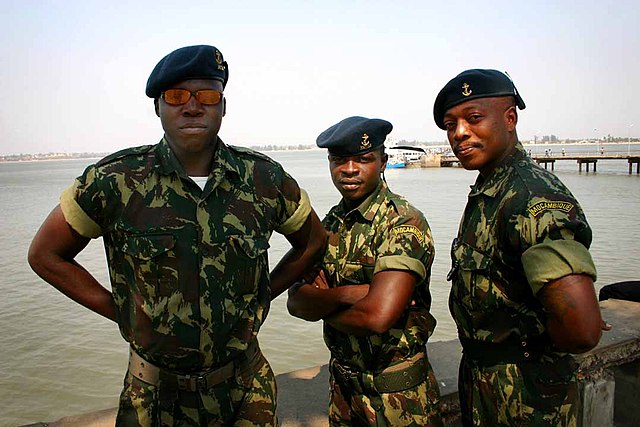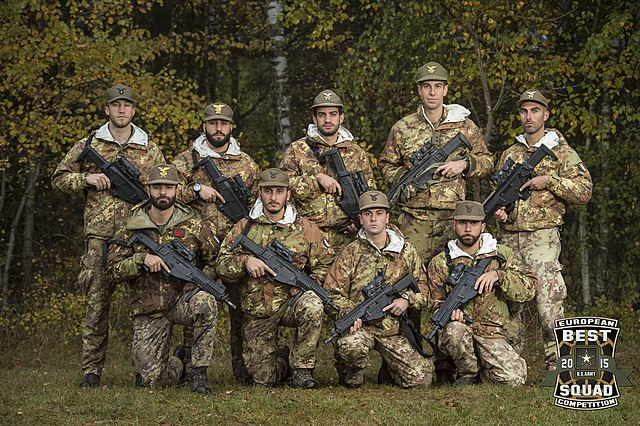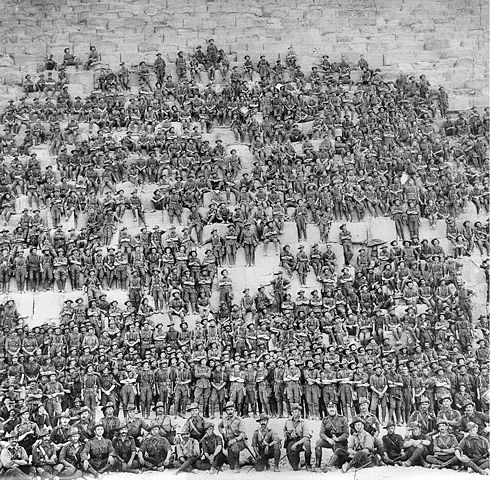Marines are warriors, pure and simple. Unfortunately there is nothing simple about fighting in the far future. They serve nearly everywhere in the Confederation, working in units as small as pairs and as large as corps. In all cases, they are expected to uphold the traditions and honor forged in blood by their predecessors.

The smallest unit of the Marines is the team. Teams are assigned to many different circumstances, but they are most commonly found alone as the security detail on small to mid sized scout and navy vessels. In this assignment, they are expected to protect their fellow crew members while on planet or aboard ship. The CSS and CNF are both restricted by space aboard ships, and the team is too small for any offensive action. Typically teams serve on these mission for no more than a couple of months before reassignment. They are often friendly with their crew mates and typically train with any scouts interested in furthering their combat skills.
Marines aboard ship are often limited by circumstances as to what weaponry and armor are available. This is not a direct combat assignment, so walking around in battledress with a PGMP is not going to be permitted. Artillery of any sort will not be available, and ballistic armor, vacc suits or hazardous environment suits may be the best armor options. In combat situations, marines may take charge of the naval or scout personnel who will do their best with their skill levels. Scouts are pragmatic, and rank is less of an impediment than knowledge and ability.

Squads are the typical Marine unit assigned to a single combat task. A squad is usually composed of 2 to 5 teams of 2 to 5 marines commanded by a sergeant. In squads, each team is organized around a particular system or function, and each team may have the same or different weapons in the squad. Squads may be found independently aboard vessels or as part of larger units where they form the backbone of Marine organization. For example, a recon platoon might have squads of marines where each team operates an air raft, or a customs ship might have a squad of marines where each team acts as a boarding party. The number of people in different teams in the same squad may also vary, where an infantry squad might have a gauss gun team, a drone team, a command team and a PGMP team. Squad and team sizes vary because their missions vary, but a squad will not be expected to stand alone in high intensity combat.

Marine platoons are the smallest unit of the Corps which will be assigned an offensive mission. They may be deployed as a unit from a small troop ship. Platoons are composed of 2-5 squads, typically 3-4, and have 20-75 marines commanded by a lieutenant. Platoons are trained to work with each other and have different capabilities spread out between the different squads. Platoons operating in space tend to be smaller since living quarters are a limiting factor in most starships. Marines have vessels at every scout and naval base able to deploy a platoon up to 2 parsecs away. While the troopships carry marines, they are not heavy space combat vessels and usually need CSS or CNF ships to protect the troop ships on the way to the target.
Companies are composed of 3-5 combat platoons with usually 150-250 marines. Scout and Naval bases have at least 1 ship able to to transport an entire company, although smaller scout bases have only a single company sized transport. Battalions are made up of 3-5 combat companies and are the largest unit able to be deployed aboard a single transport. Deployment of a battalion is a substantial military effort and is larger than some scout bases are able to support. Even more than platoon troop ships, company and battalion sized troop ships are vulnerable in space combat and require escorts to reach their target safely. The easiest way to defeat a Marine battalion is to destroy the ship before it can deploy its troops.

Short of major wars, a battalion is the largest deployment the Marines are likely to make in one effort. Most space missions are relatively small scale and aimed at targets such as pirate bases, rogue ships, or small outposts. A battalion is generally powerful enough for such purposes when backed up with appropriate spacecraft. It is also the largest formation able to be deployed from a single jump capable ship. Larger deployments through jump space require multiple ships, so a brigade would take ~ 6 5000 ton troop ships, and a division requires ~25 5000 ton troopships. For many long term large garrison operations troops are recruited locally, but if large numbers of troops need to be moved to another planet they usually travel in cold sleep and are awakened at their destination. Only when intense combat is expected at the destination will the massive effort to move a division be expended.
Support ships are expected to transport military vehicles and supplies for the deploying units as troops generally only carry enough material for a 3 day operation. Military units in heavy combat will burn through tremendous amounts of material, and the support system for battles lasting more than a day or two must be well planned. Given that jumps take a week, all vessels needed for the operation should arrive at the same time. Separate departures and the randomness of jump travel could have support craft arriving before the warships or troops which would alert the target and potentially result in significantly more deaths. If the initial assault failed for any reason, later arriving support ships would be unable to change plans and might be jumping into a lost situation they are ill equipped to handle. While simultaneous jumps are more dangerous, using skilled crew and taking extra time for all stages of the jump process can prevent accidents and result in the most secure and effective operation overall.